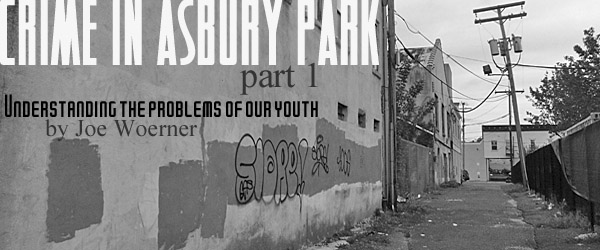Crime in Asbury Park, Part One: Understanding the Problems of Our Youth

Consistently ranked as one of the most dangerous cities in New Jersey, the crime on our streets has been more than ever on the minds of residents. In an effort to continue the discussion already underway in our community I will be sharing a few ideas that have helped me better grasp the issue as well as suggesting some possible actions. In a series of three letters I will address the fundamental underpinnings of crime, enforcement, and how to better support our community members.
Aristotle said, “Poverty is the parent of revolution and crime.” To understand our crime issue, we must first understand the devastating role poverty plays in our community. The socio-economic and emotional impacts of poverty directly correlate with insufficient family and community support. This absence of adequate support limits options and makes it near impossible for our young people to succeed.
The Center for Disease Control publishes risk and protective factors for youth violence. The risk factors, such as low parental income and diminished economic opportunity, read like a laundry list of Asbury Park’s problems. Poverty not only increases the risk factors but also decreases protective ones. Our youth live in broken homes, substandard housing, and without basic services like simple healthcare. As a result many turn to gangs for protection, financial opportunity, and a sense of belonging. This American Life did a two-part special on Harper High School (part I & part II) in Chicago that illustrates the lack of options for poor minority youth in urban areas like Asbury Park. For too many, gang involvement and violence are a given, not a choice.











If poverty if the cause of crime, then why is it that in our poorest region — Appalachia — where 30 million people live in squalor, we see crime rates at only 50% of the national average? It’s both our poorest region and our safest, which completely refutes the thesis of this deficit theory. Maybe the real problem is culture. Maybe poverty does not cause crime as much as the other way around, that communities where police are villified and drug dealers are lionized, where education is an afterthought, where 3/4 kids (and often more) are born to single mothers, and where businesses dare not invest, will of course have higher crime rates, and higher crime means more poverty.